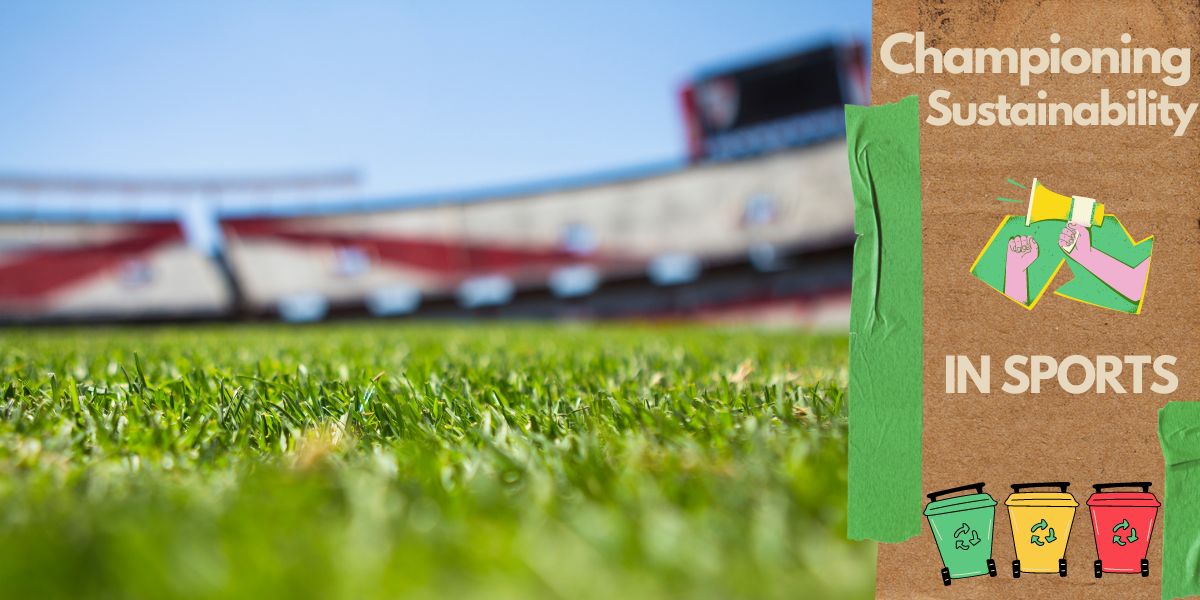
In recent years, the world has witnessed a growing commitment to sustainability across various industries, and sports is no exception. Stadiums, the heart of sporting events, have come under scrutiny for their significant environmental impact. However, sports organizations are stepping up to the challenge by implementing innovative initiatives to minimize their carbon footprint and promote sustainability.
Embracing Energy Efficiency

One of the primary ways sports stadiums are reducing their environmental impact is through the adoption of energy-efficient technologies. LED flood lights have emerged as a game-changer in this regard. Compared to traditional lighting systems, LED outdoor lights consume significantly less energy and have a longer lifespan, resulting in reduced electricity usage and maintenance costs.
A standout example of this is the Mercedes-Benz Stadium in Atlanta, home to the NFL’s Atlanta Falcons and MLS’s Atlanta United FC. This state-of-the-art stadium boasts the largest LED video display in professional sports, along with energy-efficient LED lighting throughout the facility. By making the switch to LEDs, the stadium has achieved substantial energy savings and significantly reduced its carbon emissions.
Waste Reduction and Recycling
Another key aspect of sustainability in sports stadiums is waste management. The massive influx of fans during events often leads to significant waste generation. To address this issue, many stadiums have implemented comprehensive waste reduction and recycling programs.
For instance, the Green Sports Alliance, a coalition of sports teams, venues, and leagues committed to promoting environmental stewardship, has been instrumental in driving sustainability initiatives across the sports industry. Several member stadiums, such as Levi’s Stadium in California, have implemented robust recycling programs and introduced composting initiatives to divert organic waste from landfills.
Beyond simply sorting trash into bins, these initiatives encompass everything from composting organic waste to repurposing materials for future construction projects.
Example: The Green Sports Alliance’s Collaboration with the Seattle Mariners
The Mariners, who play at T-Mobile Park, have partnered with the GSA to implement innovative waste reduction measures, including the introduction of compostable food containers and utensils throughout the stadium. By diverting food waste from landfills and converting it into compost, the Mariners have significantly reduced their ecological footprint while also contributing to the health of the soil they play on.
Integration of Renewable Energy
In addition to switching to energy-efficient lighting, many stadiums are harnessing the power of renewable energy sources to further reduce their environmental impact. Solar panels and wind turbines are being installed on stadium roofs and surrounding areas to generate clean, renewable electricity.
A shining example of this is the Allianz Arena in Munich, Germany, home to FC Bayern Munich. The stadium features a stunning façade composed of inflated ETFE plastic panels embedded with photovoltaic cells, allowing it to harness solar energy and generate power onsite. By integrating renewable energy technologies, stadiums like the Allianz Arena are not only reducing their reliance on fossil fuels but also serving as beacons of sustainable innovation.
Renewable Energy in Action: The Johan Cruyff Arena
Expanding on the integration of renewable energy sources, the Johan Cruyff Arena in Amsterdam stands as a shining example of sustainability in sports venue design. Formerly known as the Amsterdam Arena, this iconic stadium is home to Dutch football giants AFC Ajax.
In 2018, the Johan Cruyff Arena made headlines by becoming the first stadium in the world to install a large-scale energy storage system using electric vehicle (EV) batteries. This innovative system, known as the “Johan Cruyff Arena Powerpack,” consists of 148 Nissan LEAF batteries that store energy generated by the stadium’s rooftop solar panels.
The primary function of the Powerpack is to store surplus renewable energy during periods of low demand, such as sunny days when solar panels produce more electricity than the stadium consumes. This stored energy can then be utilized during peak demand periods, such as match days or concerts, reducing the arena’s reliance on the grid and minimizing its carbon footprint.
In addition to its energy storage capabilities, the Johan Cruyff Arena has also invested in other renewable energy technologies, including onsite solar panels and wind turbines. These initiatives have not only reduced the stadium’s environmental impact but also positioned it as a pioneering example of sustainable stadium management on a global scale.
Additional Case Studies in Sustainable Stadium Development
Several sports organizations have taken ambitious steps to build eco-friendly stadiums from the ground up. One such example is the Banc of California Stadium, home to Major League Soccer’s Los Angeles FC. This LEED-certified stadium incorporates numerous sustainability features, including water-efficient fixtures, drought-resistant landscaping, and a rainwater capture system for irrigation.
Similarly, the National Stadium in Singapore, also known as the Sports Hub, has set new standards for sustainable stadium design in Asia. The venue boasts a range of green features, including energy-efficient lighting, rooftop solar panels, and a unique cooling system that utilizes recycled rainwater to maintain comfortable temperatures for spectators.
The Future of Sustainable Sports Stadiums
In conclusion, sustainability in sports stadiums is no longer a distant goal but a tangible reality. Through the adoption of energy-efficient technologies, waste reduction initiatives, and the integration of renewable energy sources, sports organizations are demonstrating their commitment to environmental stewardship. Real-life examples such as the Mercedes-Benz Stadium, Levi’s Stadium, and the Allianz Arena highlight the transformative impact of sustainable practices in the world of sports. As stadiums continue to evolve as symbols of innovation and progress, they serve as powerful catalysts for driving positive change and inspiring future generations of sports fans and athletes to embrace sustainability.

Big Announcement: CFL Unveils Free Live Streaming Platforms
Get Alerts & Stay Connected
CFL iPhone AppCFL Android App









